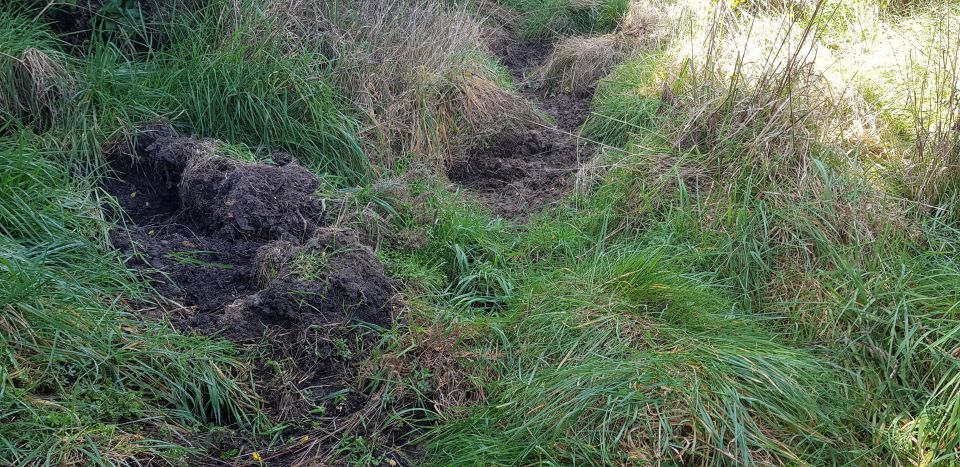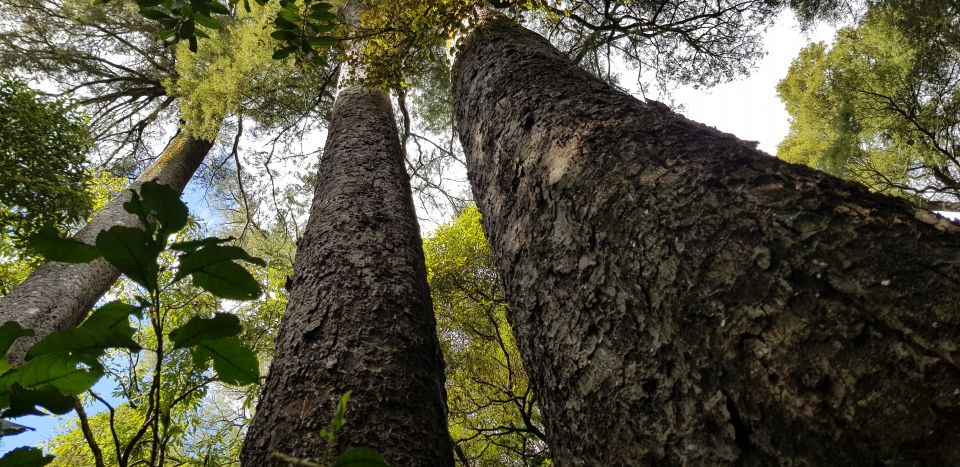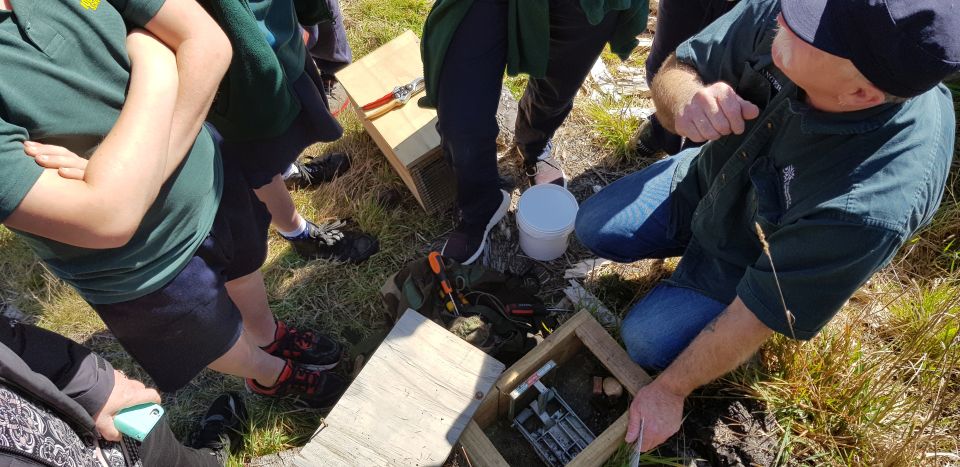You can contact LEARNZ, part of CORE Education, at:
Postal Address:
PO Box 13 678,
Christchurch 8141,
New Zealand
Photos appear here each day from the Diaries of the Ecological Restoration field trip in 2018.
Other pages with photos:

Andrew and the ambassadors on this morning's web conference with experts David Norton and Fraser Maddigan. Image: LEARNZ.

Tracking tunnels are a good tool to use when finding out what pests might be in an area. Image: LEARNZ.

Looking inside the tracking tunnel. How do you lure the animal inside? Image: LEARNZ.

When the animal goes through the tracking tunnel they walk over black ink and leave footprints. What animal do you think left these prints? Image: LEARNZ.

This little critter has smaller prints than the previous image. What might have left these? You may need to look at the video from today to find out. Image: LEARNZ.

What pest animal do you think has messed up this ground? Image: LEARNZ.

The same pest animal that caused damage shown in the previous image has also damaged this area. Sadly it has almost killed this young tōtara as a result. Image: LEARNZ.

Do you know what animal has scraped bark off this tōtara? Why is this bad for the tree?Image: LEARNZ.

A deer fence surrounds all of Tiromoana Bush to keep them from damaging the restoration planting. What do you think the little gate is for? Image: LEARNZ.

David and Fraser take in the magnificent views at the Ella Peak viewing platform. Image: LEARNZ.

Looking north from the viewing platform towards Motunau. Can you see the restoration planting that has been done recently? Image: LEARNZ.

David, Andrew and Fraser with the ambassadors at the Ella Peak lookout. What has been key learning for you from this week's field trip? I wonder if you now have some restoration projects in mind. Image: LEARNZ.

Andrew and the ambassadors with expert David Norton on this morning's web conference. Image: LEARNZ.

The ambassadors show the way to Kate Pond on part of the Tiromoana Bush track. Image: LEARNZ.

Kate Pond. Is this a natural wetland? Image: LEARNZ.

David stands next to some established restoration planting. These are kahikatea. One day they will grow tall and dominate this area around Kate Pond. Image: LEARNZ.

Here you can see a new restoration planting area. What has been done to help give these plants a good start in life? Image: LEARNZ.

Heading towards a more established restoration planting site. How is this different from the previous site? Image: LEARNZ.

You can see how the old grass/pasture is being shaded out and stops growing as the restoration planting gets more established. Image: LEARNZ.

As time goes by, birds carry seed that starts the growth of a forest understory. Image: LEARNZ.

Here you can see how the gorse is overtaken by the restoration planting and eventually dies. Image: LEARNZ.

You can hardly see David as he makes his way through the variety of plants making up the undergrowth of this stand of kānuka. Image: LEARNZ.

How has creating these breaks in the kānuka canopy helped the undergrowth? Image: LEARNZ.

These young tōtara are the future of the forest. Why have they needed to be planted by people? Image: LEARNZ.

Andrew and the ambassadors listen to David Norton on this morning's web conference. Image: LEARNZ.

The predator proof fence at Riccarton Bush. How might predators still get over the fence? Image: LEARNZ.

Looking up at New Zealand's tallest tree, the kahikatea, at Riccarton Bush. Image: LEARNZ.

An impressive tangle of roots at the base of an old kahikatea in Riccarton Bush. Image: LEARNZ.

Looking at one of the biota nodes at Tūhaitara Coastal Park. The green on top is a native aquatic plant. How might this plant be helpful? Image: LEARNZ.

One of the tasks for today's biota node monitoring was checking and resetting predator traps. Image: LEARNZ.

Placing rodent bait stations around the biota node was another task for the Woodend students. Image: LEARNZ.

A Woodend student checks water clarity from the biota node pond. It is best if the water is not completely clear. Why do you think this is? Image: LEARNZ.

Woodend students record observations around the biota node. What sorts of things do you think they are looking for? Image: LEARNZ.

Andrew and the ambassadors with Rangi Lord at 'Barbara's Lookout' at Tiromoana Bush. Image: LEARNZ.

Andrew with the ambassadors at Kerikeri airport. Image: LEARNZ.

Heading to the Bombardier Q300 that took us from Kerikeri to Auckland. Image: LEARNZ.

Looking over farmland near the Kaipara Harbour on the way to Auckland. You could find out more about the benefits of riparian planting on farms. Image: LEARNZ.

Looking over the Waitākere Ranges towards the settlement of Huia. What benefits are there from living so close to an area like the Waitākere Ranges? Image: LEARNZ.

We flew to Christchurch in this Airbus A320. Image: LEARNZ.

Looking over part of South Auckland. With such dense housing, what can be done in these areas to help the environment? Image: LEARNZ.

We managed to catch a glimpse of snow covering the peaks of the Southern Alps/Te Tiritiri o te Moana. Image: LEARNZ.

Looking down the coast towards Christchurch. Image: LEARNZ.

Looking over the Canterbury Plains from above makes you realise how much the land has changed since human settlement. Image: LEARNZ.

We got a view of the Waimakariri River just before landing. I wonder how much water is used from rivers in Canterbury for irrigation. Image: LEARNZ.